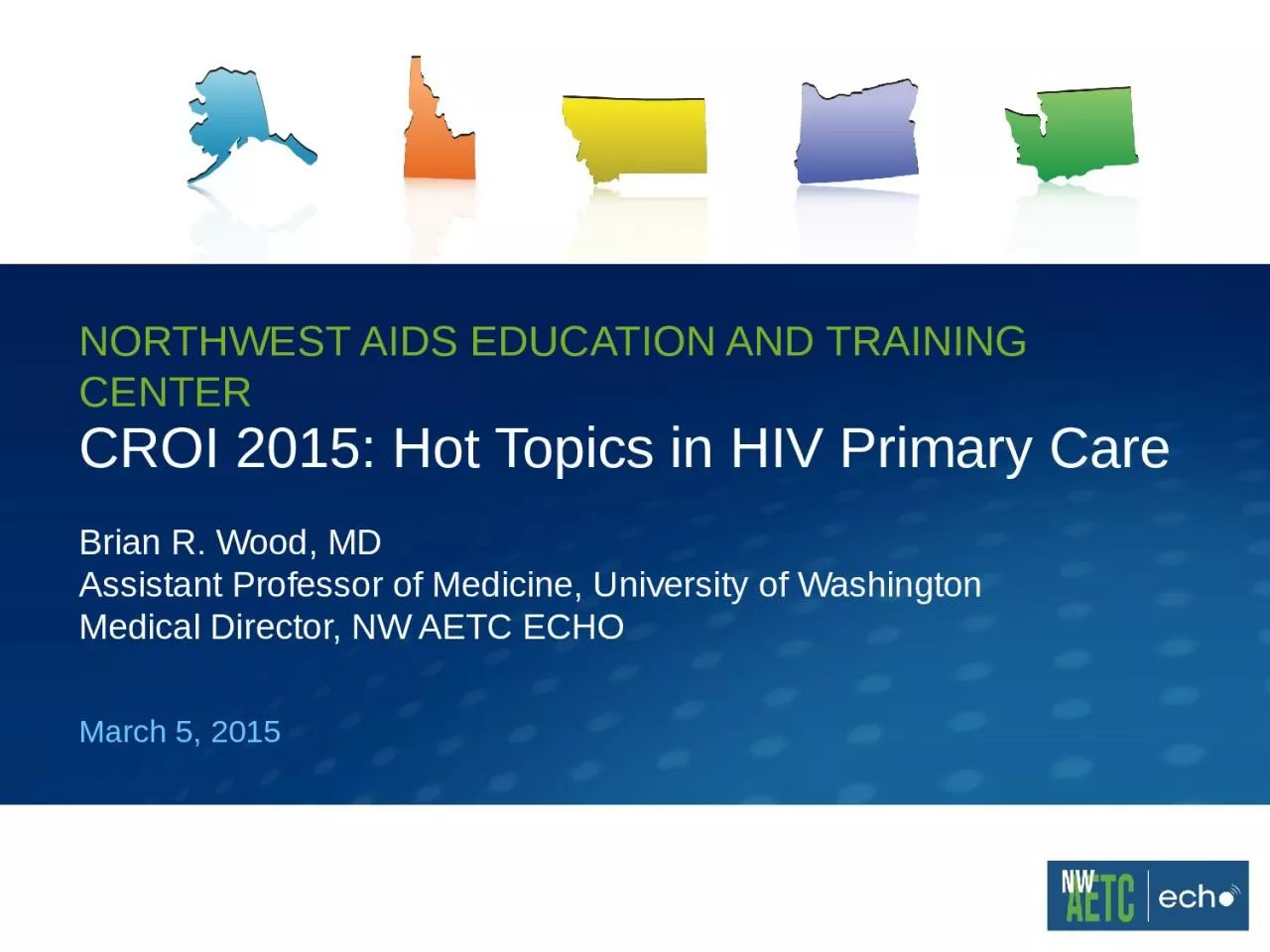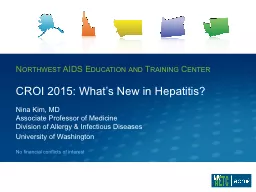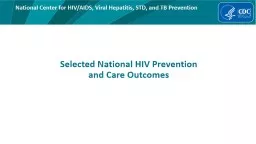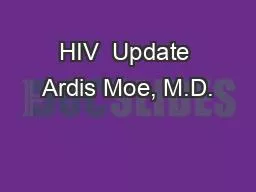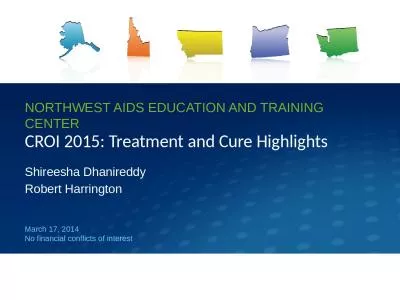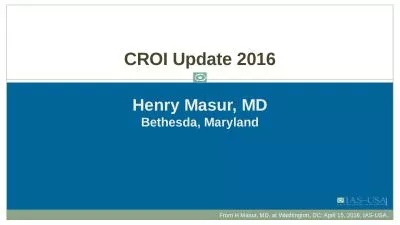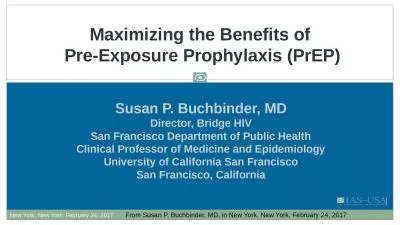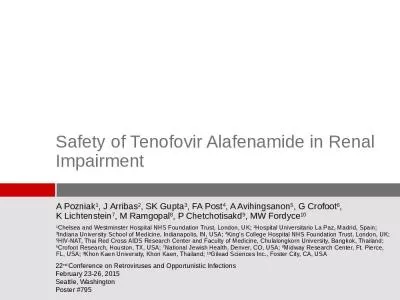PPT-CROI 2015: Hot Topics in HIV Primary Care
Author : dora | Published Date : 2023-11-19
Brian R Wood MD Assistant Professor of Medicine University of Washington Medical Director NW AETC ECHO March 5 2015 ECHO CROI Reviews 2015 3515 31215 31915 Brian
Presentation Embed Code
Download Presentation
Download Presentation The PPT/PDF document "CROI 2015: Hot Topics in HIV Primary Car..." is the property of its rightful owner. Permission is granted to download and print the materials on this website for personal, non-commercial use only, and to display it on your personal computer provided you do not modify the materials and that you retain all copyright notices contained in the materials. By downloading content from our website, you accept the terms of this agreement.
CROI 2015: Hot Topics in HIV Primary Care: Transcript
Download Rules Of Document
"CROI 2015: Hot Topics in HIV Primary Care"The content belongs to its owner. You may download and print it for personal use, without modification, and keep all copyright notices. By downloading, you agree to these terms.
Related Documents

